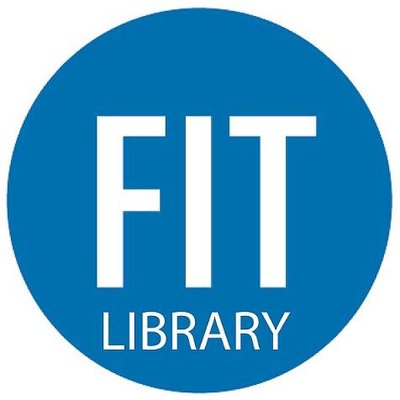Human Trafficking: An Asian Perspective
DOI:
https://doi.org/10.61841/pn6p2b73Keywords:
Human Trafficking, Control of Corruption, Government EffectivenessAbstract
Human trafficking is a major global issue. Statistics reflect a growing trend, especially with a similar trend in corruption. The collaborative nature of both these negative phenomena is alarming, even with the incomplete statistics and records. ASEAN member countries are at high risk and need to enforce stronger penalties and corrective action to fight against human trafficking. The economic and social gap within the countries and region adds to the issue of human trafficking. This research was assessed using secondary data from various credible international agencies. Two major factors that impacted human trafficking are from the World Governance Indicators: government effectiveness and control of corruption. Therefore, this implies that effective leadership and cooperation from the ASEAN member countries would mutually benefit the citizens of these countries.
Downloads
References
1. APLE Cambodia, Investigating Travelling Child Sex Offenders: An Analysis of the Trends and Challenges in the Field of Child Sexual Abuse and Exploitation in Cambodia. (Phnom Penh: APLE Cambodia, 2014), 8-9. Accessed 21 October 2016
2. Akhsan, 2011. "All Forms of Forced Labour." Forced Labour and Human Trafficking: Estimating the Profits. (2005)
3. Aronowitz, Alexis A. (2001), “Smuggling and Trafficking in Human Beings: The phenomenon, the markets that drive it, and the organisations that promote it,” European Journal on Criminal Policy and Research, 9, 163-195.
4. Asian Development Bank (ADB), (2003), Combating Trafficking of Women and Children in South Asia: Guide for Integrating Trafficking Concerns into ADB Operations, Manila, ADB.
5. Belser, Patrick, Michaëlle de Cock and Fahran Mehran, 2005, ILO Minimum Estimate of Forced Labour in the World, ILO, Geneva
6. Belser, P., and Danailova-Trainor, G. (2006). “Globalization and the Illicit Market for Human Trafficking: An Empirical Analysis of Supply and Demand.” Geneva: International Labour Office.
7. Bernat, Frances P., and Heather C. Winkeller. “Human Sex Trafficking: The Global Becomes Local.” Women & Criminal Justice 20, no. 1-2 (2010)
8. Brunei". Trafficking in Persons Report 2010. U.S. Department of State (June 14, 2010)
9. Carletto, Calogero, and Alan de Brauw (2007), Measuring Migration Using Household Surveys, Migration Operational Note No. 2, World Bank, Washington, DC.
10. Colberg, P.; Höfling, F.; Tavares (2011). "Highly accelerated simulations of glassy dynamics using GPUs: caveats on limited floating-point precision
11. Creswell, John W. 2007. Qualitative Inquiry & Research Design: Choosing Among Five Approaches, 2nd ed.
Thousand Oaks, London, New Delhi: SAGE Publications.
12. David, Fiona (2008), Research on Trafficking in Persons in Southeast Asia: A Comment on Recent Trends,
along with Remaining Gaps and Challenges, paper presented at IOM workshop on Human Trafficking:
New Directions for Research, Cairo, January 11th and 12th .
13. David, Fiona, Pauline David, and Anne T. Gallagher. “ASEAN Handbook on International Legal Cooperation
in Trafficking in Persons Cases,” 2010
14. Derks, Annuska (1998) Trafficking of Vietnamese Women and Children to Cambodia. International
Organization for Migration and Center for Advanced Studies
15. Dottridge, M. (2007) Collateral Damage: The impact of anti-trafficking measures on human rights around the
world, Global Alliance Against Trafficking in Women, Bangkok
16. Dottridge, M. (2003). Deserving Trust: Issues of Accountability for Human Right NGOs. Switzerland:
International Council on Human Rights.
17. Dunn, Patrick F. (2005). Measurement and Data Analysis for Engineering and Science.
18. ECPAT International, 2016, Regional Report on Sexual Exploitation of Children in Travel and Tourism, 25.
19. Engle, Lauren B. (2004), The World in Motion. Short Essays on Migration and Gender. Geneva: International
Organization for Migration.
20. Ford, Michele & Lenore Lyons. 2012. A Companion to Border Studies: Labor Migration, Trafficking and
Border Controls. Paris: Blackwell Publishing, Ltd.
21. Hausner, Sondra (2005) The Movement of Women. Migration, Trafficking and Prostitution in the Context of
Nepal’s Armed Conflict. Save the Children USA, Kathmandu.
22. Hemmings, 2016. A Problem By a Different Name?. 350 Main Street, Malden, MA: Blackwell Publishing Ltd.
23. Holmes, L. (2005). Human Trafficking and Corruption: Triple Victimization? In C. Freisendorf, (Ed.),
Strategies Against Trafficking: The Role of the Security Sector (pp. 83-114). Vienna: National Defence Academy
and Austrian Ministry of Defence and Sports.
24. "Human Trafficking." What Is Human Trafficking? United Nations Office on Drugs and Crime, 2016.
25. Hagar International, Stamping Out Transnational Crime in Singapore (2018) Hagar International
http://hagarinternational.org/singapore/stamping-out-transnationalcrime-in-singapore/>
26. ILO Special Action Programme to combat forced labour. (2012) "ILO 2012 Global estimate of forced labour
27. ILO. 2004. “Towards a Fair Deal for Migrant Workers in the Global Eonomy.” in International Labour
Conference, 92nd Session, 2016
28. ILO (2005) A global alliance against forced labour, Global Report under the Follow-up to the
29. ILO Declaration on Fundamental Principles and Rights at Work, ILO, Geneva.
30. ILO: Resolution concerning the Conditions of Employment of Domestic Workers, International Labour
Conference, Geneva, 49th session, 1965.
31. IOM (2007). ASEAN and Trafficking in Persons: Using Data as a Tool to Combat Trafficking in Persons,
IOM, Geneva.
32. International Organization of Migration (IOM). 2013. World Migration Report: Migrant, Well-Being and
Development. Geneva
33. International Organization for Migration (IOM) 2004 Trafficking in Persons: An Analysis of Afghanistan,
IOM, Geneva. 262 Kelly International Organization for Migration (IOM)/International Catholic Migration
Commission (ICMC)
34. Imdadullah. "Time Series Analysis". Basic Statistics and Data Analysis. itfeature.com. Retrieved 2
January 2014.
35. Jeffreys, Sheila (1999), “Globalizing Sexual Exploitation: Sex tourism and the traffic in women,” Leisure
Studies, 18, 179-196.
36. Kempadoo, K. (2005). (Ed.), Trafficking and Prostitution Reconsidered. Boulder: Paradigm Publishers.
37. Kaufmann, D., Kraay, A., & Mastruzzi, M. (2006). Governance Matters V: Aggregate and Individual
Governance Indicators for the 1996-2005 World Bank.
38. "Laos". Trafficking in Persons Report 2008. U.S. Department of State (June 4, 2008)
39. Lin, Jessica; Keogh, Emman; Lonardi, Stefano; Chiu, Bill (2003). "A symbolic representation of time series,
with implications for streaming algorithms
40. Lucas, Robert E. B. 2008, “International Labor Migration in a Globalizing Economy.” Papers. Washington:
Carnegie Endowment for International Peace Publication Department.
41. Luis CdeBaca and Jane NadySigmon:, Global Health: Science and Practice, August 2014, 2(3):261-267
42. Miller, J. (2006). “Slave Trade: Combating Human Trafficking.” Harvard International Review. 27(4): 70-73
43. Pearson, Elaine (2004), Safe migration within China: Protecting girls and young women to prevent trafficking,
Discussion Paper, CP-TING project in China, ILO, Geneva.
44. Pearson, K. (1895). "Contributions to the Mathematical Theory of Evolution. II. Skew Variation in
Homogeneous Material". Philosophical Transactions of the Royal Society A: Mathematics, Physics, and
Engineering Sciences.
45. Pickup, Francine (1998), “More words but no action? Forced migration and trafficking of women,” in Gender
and Development, 6(1), 44-51.
46. Rigg, Jonathan (1997) Southeast Asia: The Human Lanscape of Modernization and Development. London,
Routledge
47. Ralf Emmers, Beth Greener-Barcham and Nicholas Thomas, Contemporary Southeast Asia, Institutional
Arrangements to Counter Human Trafficking in the Asia Pacific Vol. 28, No. 3 (December 2006), pp. 490-511
48. Singapore". Trafficking in Persons Report 2008. U.S. Department of State (June 4, 2008).
49. Teresa Tavares, 2010, The Sexual Trafficking of Women: Representations of Illegality and Victimisation.
50. "Trafficking Victims Protection Act". Fight Slavery Now! 2015-10-22
51. "Trafficking in Persons Report 2017: Tier Placements"
52. The Marshall Project, Nonprofit journalism about criminal justice; 10th June 2018
53. United Nations Development Programme (2017), Human Development Report, UNDP, New York.
54. United Nations Office on Drugs and Crime (UNODC). (2008) Trafficking in Persons: Analysis on Europe.
Vienna: UN Press.
55. United Nations. (2000). Protocol to prevent, suppress and punish trafficking in persons, especially women and
children, supplementing the United Nations Convention Against Transnational Organized Crime.
56. UNODC. (2010) The Role of Corruption in Trafficking in Persons. Vienna: The United Nations.
57. United Nations, Department of Economic and Social Affairs, Population Division, „International Migration
2009‟.
58. United States Department of State, 2018 Trafficking in Persons Report—Antigua and Barbuda, 28 June 2018.
59. United Nations, Situation of human trafficking in the ASEAN countries: United Nations Statistics Division, 2000
60. UNICEF: Reference Guide on protecting the rights of child victims of trafficking in Malaysia, 2017
61. World Bank (2007), The Role of Migration in National Development Strategies: A Review of Poverty Reduction Strategies, paper presented at the Global Forum on Migration and Development, Belgium, July, Brussels.
Downloads
Published
Issue
Section
License
Copyright (c) 2020 AUTHOR

This work is licensed under a Creative Commons Attribution 4.0 International License.
You are free to:
- Share — copy and redistribute the material in any medium or format for any purpose, even commercially.
- Adapt — remix, transform, and build upon the material for any purpose, even commercially.
- The licensor cannot revoke these freedoms as long as you follow the license terms.
Under the following terms:
- Attribution — You must give appropriate credit , provide a link to the license, and indicate if changes were made . You may do so in any reasonable manner, but not in any way that suggests the licensor endorses you or your use.
- No additional restrictions — You may not apply legal terms or technological measures that legally restrict others from doing anything the license permits.
Notices:
You do not have to comply with the license for elements of the material in the public domain or where your use is permitted by an applicable exception or limitation .
No warranties are given. The license may not give you all of the permissions necessary for your intended use. For example, other rights such as publicity, privacy, or moral rights may limit how you use the material.
















